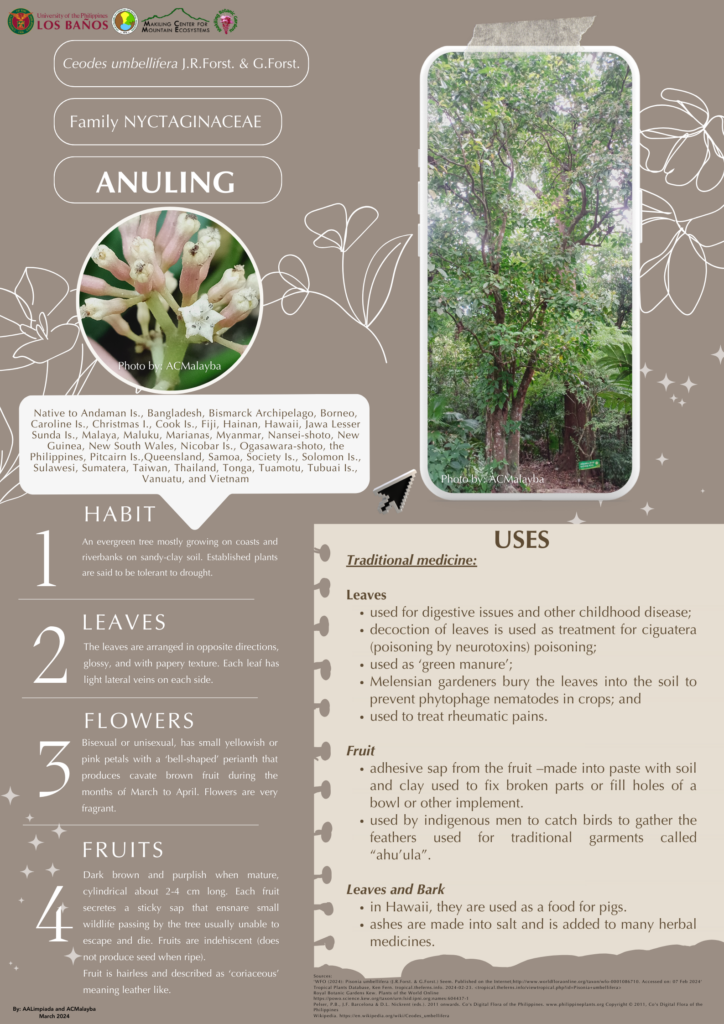
The Makiling Botanic Gardens (MBG) Plant of the Month (POM) for March 2024 is the Anuling, scientifically known as Ceodes umbellifera J.R.Forst. & G.Forst. from the family Nyctaginaceae. Anuling is native to Andaman Is., Bangladesh, Bismarck Archipelago, Borneo, Caroline Is., Christmas I., Cook Is., Fiji, Hainan, Hawaii, Jawa Lesser Sunda Is., Malaya, Maluku, Marianas, Myanmar, Nansei-shoto, New Guinea, New South Wales, Nicobar Is., Ogasawara-shoto, the Philippines, Pitcairn Is., Queensland, Samoa, Society Is., Solomon Is., Sulawesi, Sumatera, Taiwan, Thailand, Tonga, Tuamotu, Tubuai Is., Vanuatu, and Vietnam.
This is an evergreen tree mostly growing on coasts and riverbanks on sandy-clay soil. Established plants are said to be tolerant to drought. Its leaves are arranged in opposite directions, glossy, and with a papery texture. Each leaf has light lateral veins on each side. Meanwhile, it has flowers that are bisexual or unisexual, and has small yellowish or pink petals with a ‘bell-shaped’ perianth that produces cavate brown fruit during March to April. Noticeably, Anuling flowers are very fragrant. Further, the fruits of this tree are known to be dark brown and purplish when mature, cylindrical about 2-4 cm long. Each fruit secretes a sticky sap that ensnare small wildlife passing by the tree usually unable to escape and die. Fruits are indehiscent (do not produce seed when ripe). They are also hairless and described as ‘coriaceous’ meaning leather-like.
Anuling has several uses. In traditional medicine, its leaves are used for digestive issues and other childhood diseases; the decoction of leaves is used as a treatment for ciguatera (poisoning by neurotoxins) poisoning; used as ‘green manure’; Melensian gardeners bury the leaves into the soil to prevent phytophage nematodes in crops; and used to treat rheumatic pains. On the other hand, its fruits are used as adhesives where sap from the fruit is made into a paste with soil and clay used to fix broken parts or fill holes of a bowl or other implement and is also used by indigenous men to catch birds to gather the feathers used for traditional garments called “ahu’ula”.
Other than medicinal uses, the leaves and bark of Anuling are used as food for pigs in Hawaii, and the ashes are made into salt and is added to many herbal medicines.
More about this plant can be found through this link: https://youtu.be/6zbKcFQak3c
By: AALimpiada and ACMalayba


